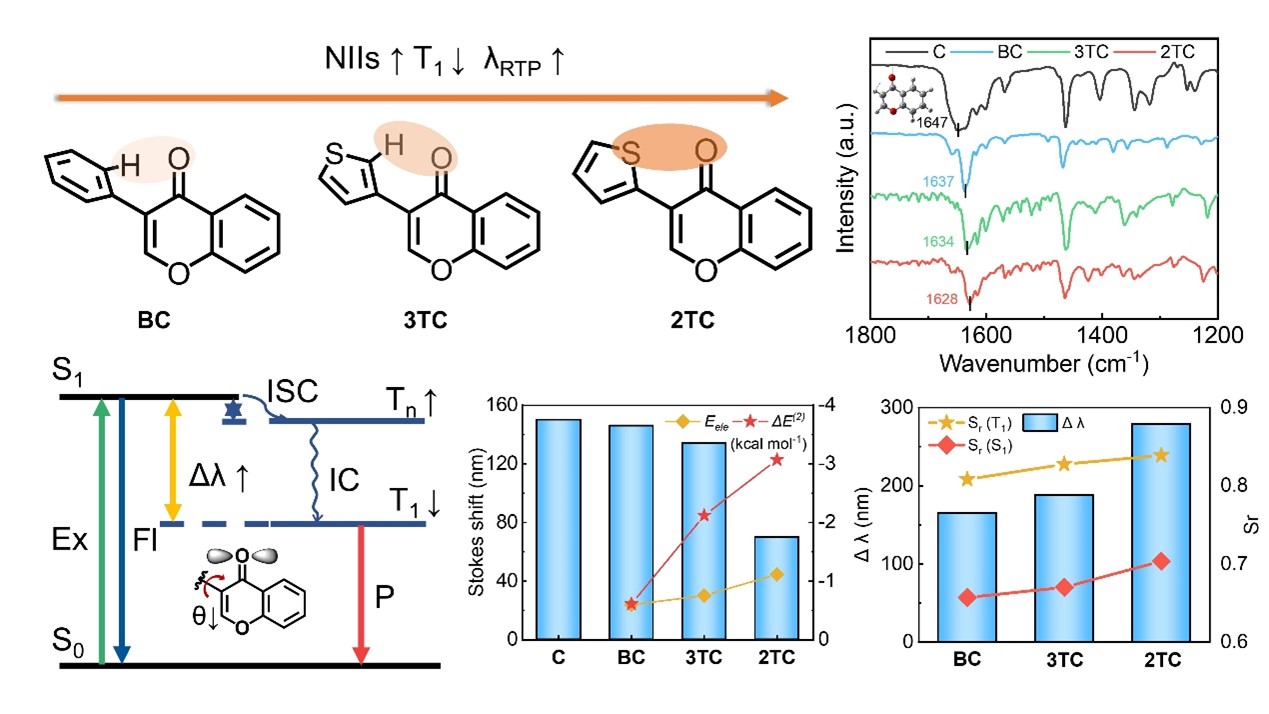In biological systems, temperature detection is an important tool. A non-contact temperature sensor based on luminescent probes is a non-invasive and easy-to-observe method. Among them, the ratio-type temperature probe based on the double emission intensity ratio can provide self-calibrated readings, while dual-ratiometric measurements can provide more accurate measurements. However, dual-ratiometric thermometers are limited to rare earth materials and are therefore unsuitable for biological applications. In the past decade, organic room temperature phosphorescence has been widely studied due to its extensive applications in luminescence, anti-counterfeiting, and imaging. However, in order to obtain phosphorescent emission at room temperature, the energy gap between singlet and triplet states usually needs to be small to promote efficient intersystem crossing (ISC), which often results in a small wavelength difference between fluorescence and phosphorescence, thereby reducing the accuracy of preparing ratio-type temperature sensors using fluorescence and phosphorescence dual-emission mechanisms. Recently, Professors Hui Huang and Qian Peng from the University of Chinese Academy of Sciences and Professor Fuyou Li from Fudan University collaborated to study keto molecules. By introducing intramolecular non-covalent interactions (NIIs) and regulating the triplet energy levels of organic molecules, they obtained organic molecules with small fluorescence-phosphorescence double emission overlap. Based on their intensity and lifetime ratio, they constructed a three-dimensional dual-ratiometric temperature probe.

A series of ketone derivatives (BC, 3TC, 2TC) were synthesized and the presence of NIIs in BC, 3TC, and 2TC was confirmed using Fourier transform infrared spectroscopy, two-dimensional nuclear magnetic resonance, single crystal analysis, and theoretical calculations. The intensity of NIIs increased continuously. The regulation of NIIs caused T1 to move away from S1, producing longer wavelength phosphorescence, and the high triplet excited state (Tn) was regulated to be close to S1, resulting in efficient intersystem crossing. Therefore, the compounds obtained through this mechanism have efficient room temperature phosphorescence and a large wavelength difference in dual-emission, ensuring minimal mutual interference during detection. Based on this, a three-dimensional dual-ratiometric temperature probe was established.

Finally, the probe was applied for temperature detection in cells and live organisms, achieving a temperature sensitivity of 0.85% K-1 and uncertainty of 0.89 K at 308.15 K. It provided a visualization tool for in situ surface temperature detection in mice during anesthesia. In this study, we regulated the triplet energy level of organic semiconductors by adjusting their conformation to realize a dual-ratiometric temperature probe.
The research results were recently published in Angewandte Chemie International Edition. The first author of the article is Chen Hao, a current doctoral student at the University of Chinese Academy of Sciences.


